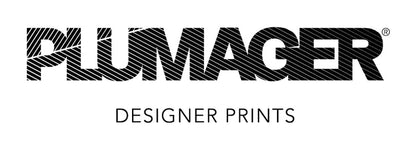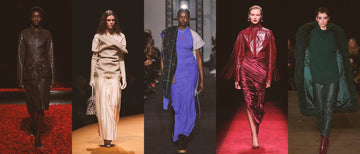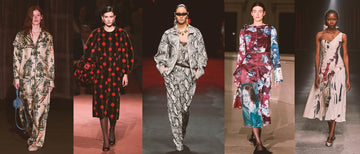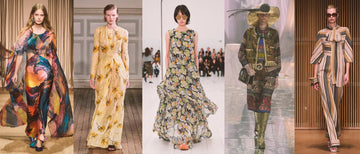Screen Printing Basics
INTRODUCTION
Screen-printing may be the most popular and wide-spread method of surface printing in the world. The process is used to produce printed designs on textiles, wallpaper, posters, tee shirts, hats, coffee mugs and almost any other printable substrate. In all cases, a stretched fabric is prepared by filling in all non-printing areas, with the intended image left open. Ink, about the consistency of mayonnaise, is then forced through the open areas with a squeegee and onto the substrate, forming the printed image. For bulk textile printing, there are two main commercial varieties, flat bed and rotary. For now, we’ll stick to the basics.
HISTORY
Screen-printing was formerly called “silk screening" due to the early use of real silk fabric. That term has proven difficult to shake by the industry, but its use is beginning fade. The process is said to have originated in China as early as the tenth century. Early screens were prepared by blocking out non-printing areas using a variety of brush applied paints, glues and other durable materials. Cut out paper or similar material could also be used for low production, when adhered to the bottom of the screen, even using the ink itself.
A major improvement was the introduction of two-layer, knife-cut films, still used today. These films feature a transparent backing with a semitransparent stencil layer. The film is laid over the artwork, cut with specialized knives and the printing areas peeled off. It is then softened and adhered to the fabric with solvent and pressure and the backing layer removed. This method is still favored for sign makers and such for its speed and low cost.
In the early 20th century, photo sensitive emulsions for stencil making began to appear. This is the method most commonly used today and involves exposing photosensitive emulsion through a film positive.
ARTWORK
Some of the challenges of screen-printing images, especially on textile, are noted below.

Full size, positive, black and white artwork must be prepared for each color of a design. Multi-color designs must be color-separated with registration marks added. A right-reading film positive is then made of each color of a design. This consists of a thin opaque emulsion on a translucent background and can be produced either photographically, using a large process camera, or digitally printed directly onto special media. “Right-reading” means that the opaque emulsion is toward the viewer when the image is read in its normal orientation.

FRAME AND FABRIC
The traditional flat screen consists of a square or rectangular frame with one side covered with a stretched fabric. Frame materials can include wood, aluminum or other metals. The fabric is stretched in two directions and attached to wooden frames with staples and to metal frames with adhesive. The stretching process can be automated and instrumented for high accuracy applications.
The fabric shown in the graphics is of a much coarser mesh and thicker thread than would normally be used. This was done only in order to illustrate the concepts. The real fabrics used can be woven of mono- or multi-filament threads of polyester or other synthetic materials. Actual mesh sizes range from about 60 to 300 threads per inch. Typically, several thread diameters are available as well.

THE STENCIL
The stencil is the part that determines where the ink will go through the mesh. Photo stencils can be made using at least two methods. Two layer films are available with a transparent backing sheet and a photosensitive emulsion layer, similar to knife-cut films. These are exposed and washed separately and then adhered to the fabric using solvent and pressure to soften the emulsion layer and force it into the mesh. When the emulsion is dry, the backing sheet is removed.
The more common method is to coat the stretched mesh with any of a wide variety of liquid photosensitive emulsions. The coating is applied, under dark room conditions, on the bottom surface of the screen and the screen is allowed to dry in a horizontal position.

Additional coats of emulsion can be applied to the bottom surface to create a thicker stencil at the bottom, to better capture small details and to reduce mesh effects in the final print.
EXPOSURE AND WASHOUT
After the photo emulsion has dried, the film positive is brought into direct contact with the bottom of the screen, emulsion-to-emulsion.

They can be held in contact using gravity, with a large sheet of plate glass and a photoflood lamp or, as in large commercial shops, with a vacuum, rubber diaphragm and collimated light source. In any case, the light causes the unmasked, non-printing areas to cross-link and harden while the unexposed printing areas remain water-soluble.

The unhardened printing areas can now be washed out with moderate water pressure and allowed to dry.

The non-printing “islands” of the design are held in place by the open mesh of the screen.

After washout, the screen can be re-exposed to further harden the emulsion for extra wear resistance. In addition, the inside corners of the screen are typically taped (not shown) to prevent ink leakage.
PRINTING
To create a print, the screen is placed in direct contact with the intended substrate. Exceptions include when an extra heavy build up is required, when spacers can be used to keep the screen just above the surface. As mentioned earlier, the ink is forced through the open areas of the screen using a squeegee. The rubber blade of the squeegee is kept sharp and is tilted at an angle such that the sharp edge is in contact with the inside surface of the screen. A bead of ink is applied to one side of the design and the squeegee introduced.

The squeegee is then drawn across the design using moderate pressure. The squeegee must continue well beyond the farthest point of the design.

Screen printing inks can be of the air-dry type or, more commonly, cured using heat or ultraviolet light.

Screen-printing can be anything from a fun hobby, to a profitable home business, to a satisfying career. While it is one of the oldest forms of printing, it shows no signs of going away any time soon.
 |
Bill MacIndoe |
|
Bill MacIndoe is the Director of Operations for Plumager, Inc., a leading supplier of stock and custom surface designs for the textile and other printed goods industries. He worked his way through college by custom screen-printing tee shirts and uniforms for sports teams and businesses in the Worcester, MA, USA area. |






3 comments
I’m a fashion student and this was so helpful to me! Very clear and easy to understand. I’m excited to start my print making classes this Fall!
I’d always been curious about how things get printed on fabric. Now I know thanks to this thorough explanation. Great job!
Great post! Such clear explanations and images. I learned a lot. Thank you!